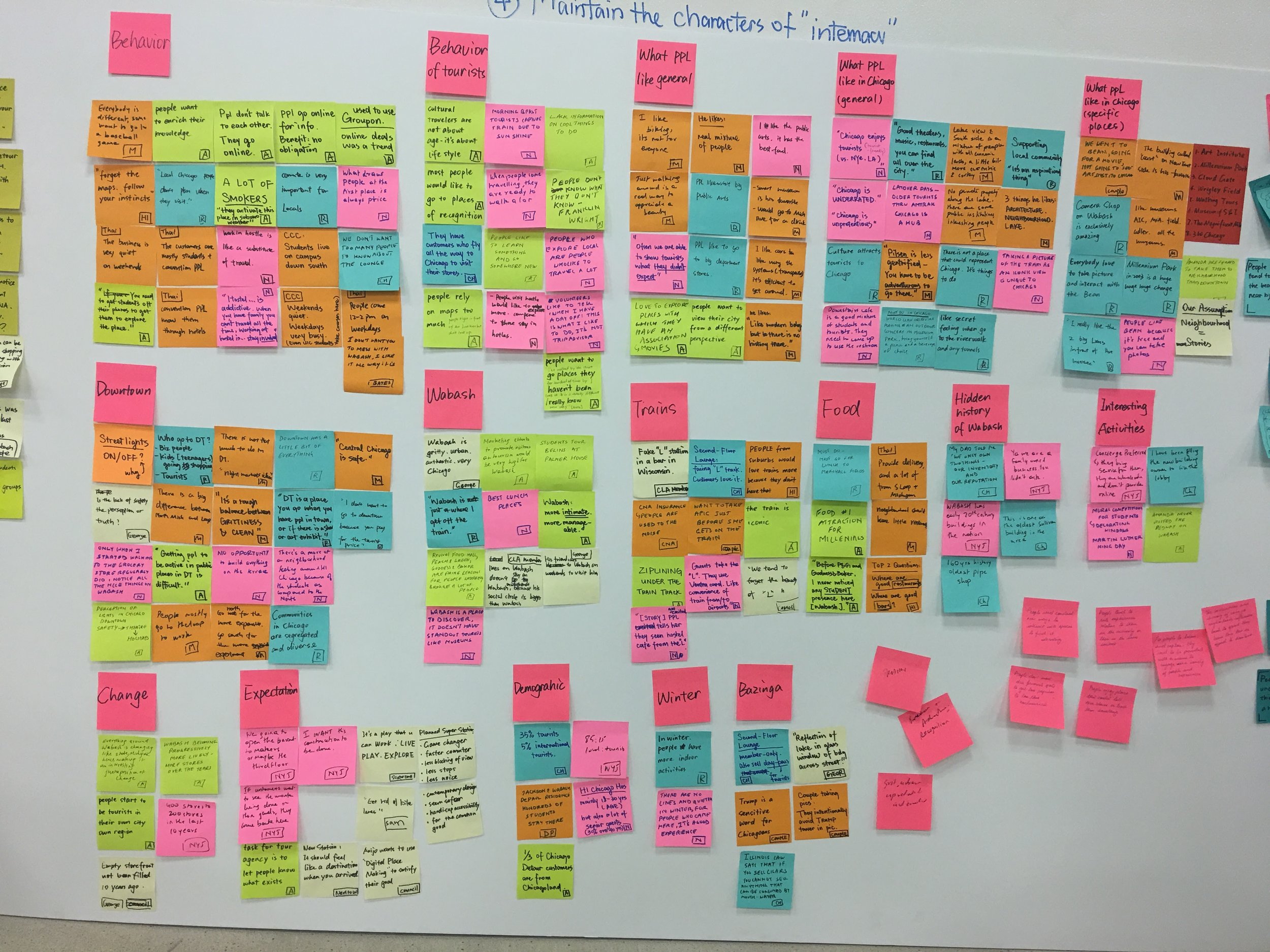Interactive Place making
Re-imagining Wabash Avenue in the Chicago Loop district
Project Objective
We worked with Chicago Loop alliance, Gensler Chicago and several other city organizations with four key focus areas – Retail, Tourism, Residential and Transportation. My team was assigned tourism experiences and the challenge posed to us was
“What can Wabash offer to tourists (and locals) that Michigan Avenue and State Street cannot? How do we take current assets and build future experiences to enhance the tourist experience?”
The problem
Despite its assets, Wabash Avenue is an underperforming street in terms of commercial and residential rents compared to its neighbors, Michigan Avenue and State Street. Although the ‘L’ is a unique and defining feature of Wabash, it also makes the corridor dark and loud, and the streetscape is marked by litter, pigeons, and unmaintained planters.
Insights
Click through the images to view our insights derived from primary and secondary research


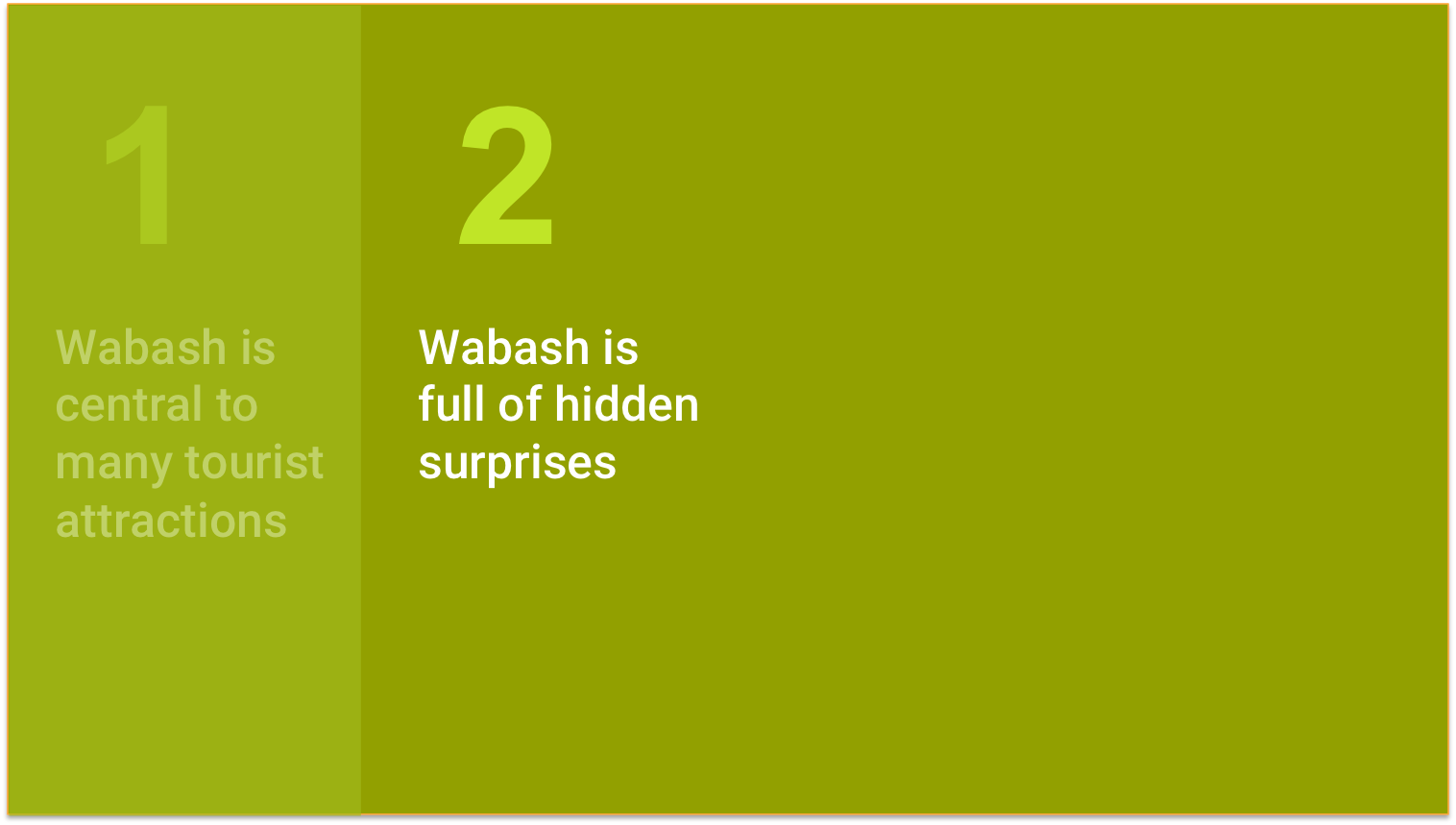
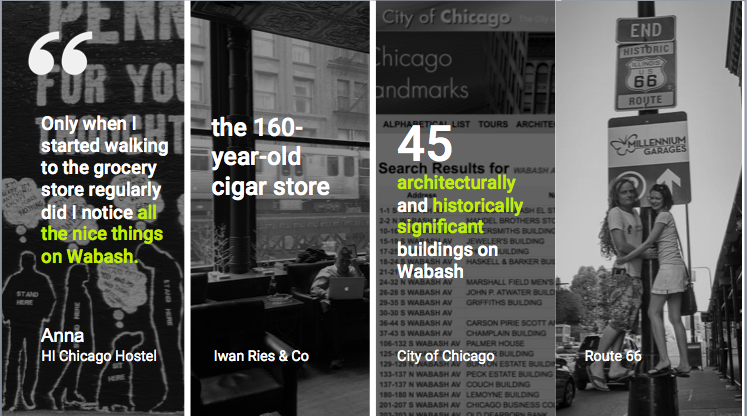
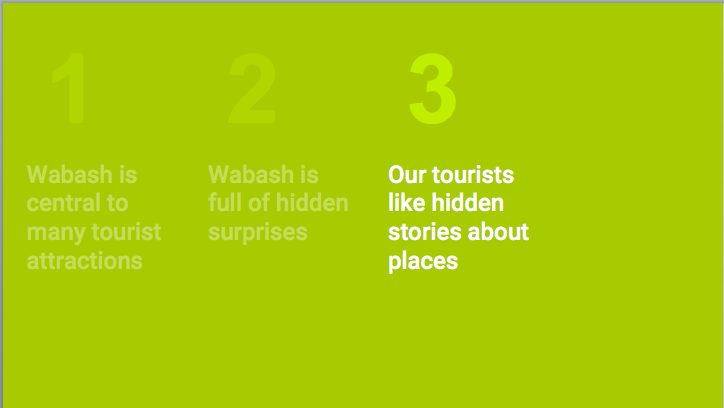

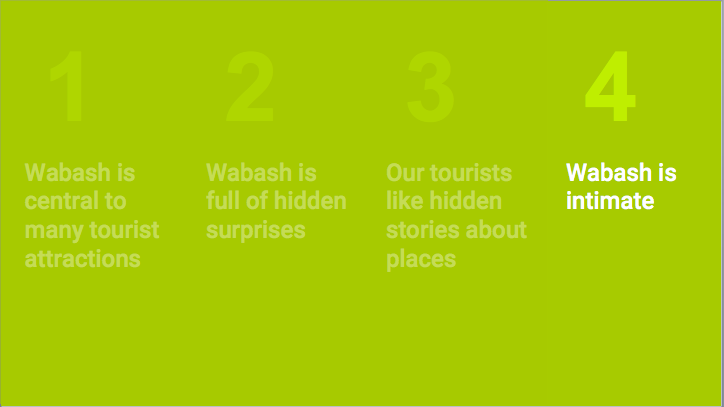

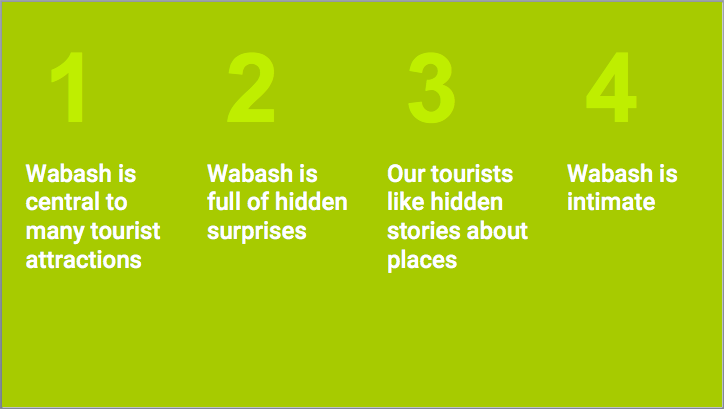
According to new figures released by the city, Millennium Park witnessed 12.9 million visitors just in the second half of 2016. The mayor’s office proclaims that these numbers not only place the park in the top spot for the Midwest region, but Millennium Park has broken into the top 10 most visited attractions in the country. Wabash Avenue is home to several interactive murals, and stores with a longstanding history and a loyal customer following. It also hosts the starting point of the main street of America or historic US Route66.
Based on our insights, we reframed the problem.
Solution
We found two key opportunity areas for Wabash Avenue
- Gamified exploration
Opportunities to search for interesting, amusing and informative titbits while guiding to discover lots of cool places & fascinating facts, engaging tourists to take photos at photo spots & interactive murals. It’s not about a scavenger hunt nor about following a digitally guided map.
- Restful engagement
Opportunities to relax, talk, laugh, eat & drink while soaking up views of the train with second floor cafes, a downtime for tourists moving between museums on Michigan and shopping on State Street.
Roadmap
Find above our definition of tourists. And the key demographic that we believe will keep bringing people back to Wabash is the Social Media Influencers.
According to Edelman Digital 2017 Digital Trends Report, 2017 will see the rise of micro-influencers. Micro-influencers “engaged audiences” tend to act with more passion because they feel more connected to the influencer and their content.
Once Wabash has gotten the attention it deserves, to keep it interesting, the clues of the game and the tone of the cafes can be uniformly created under a theme. And this theme can be changed half yearly or annually (periodically). These themes can be for example, art or architecture and can have multiple sponsors backing it. Chicago has a wealth of history, culture, and excellence to generate themes – 40 museums, 150 theatres, 6000 restaurants, home to the World’s largest public library: Harold Washington library, 30 Fortune 500 companies. It is also home to Innovative ventures like mHUB, themes of the future that can be promoted through this platform.
Approach & Contribution
We used place making concepts and a design led approach to the project. Below are some key approaches we used and my contribution.
User Research
We did about 12 interviews and several intercepts. I helped lead most of the interview sessions and majority of the intercepts. We identified participants with the help of adjacency maps & also did a card sort activity with some participants.
Insights Generation
We had an exhaustive number of quotes and observations and we clustered these to generate insights. We also did an ERAF analysis that further helped us refine our insights and create design principles.
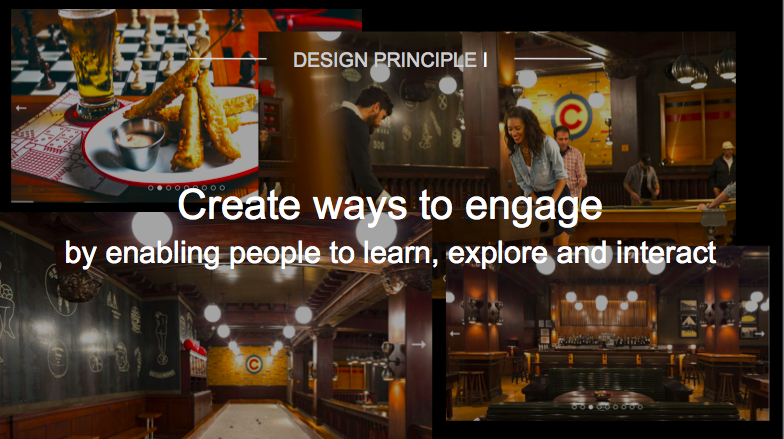
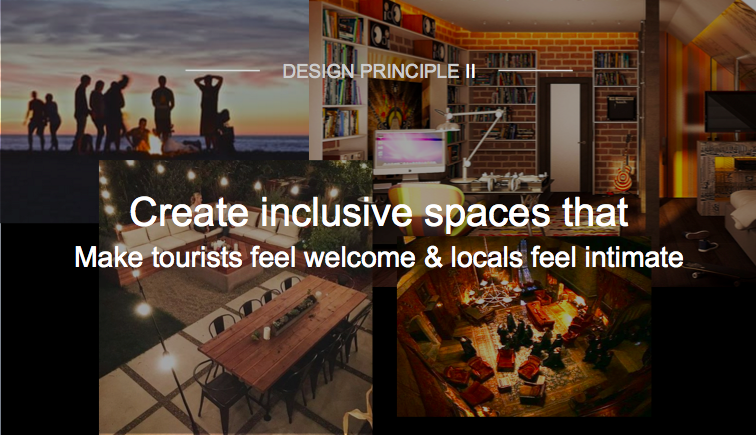
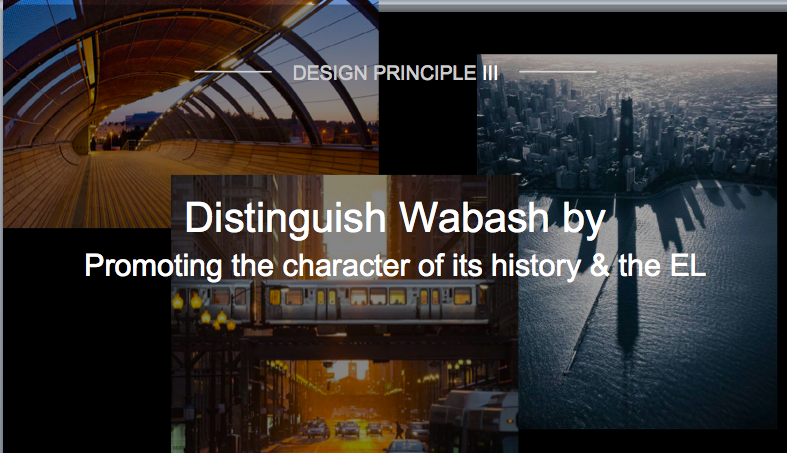
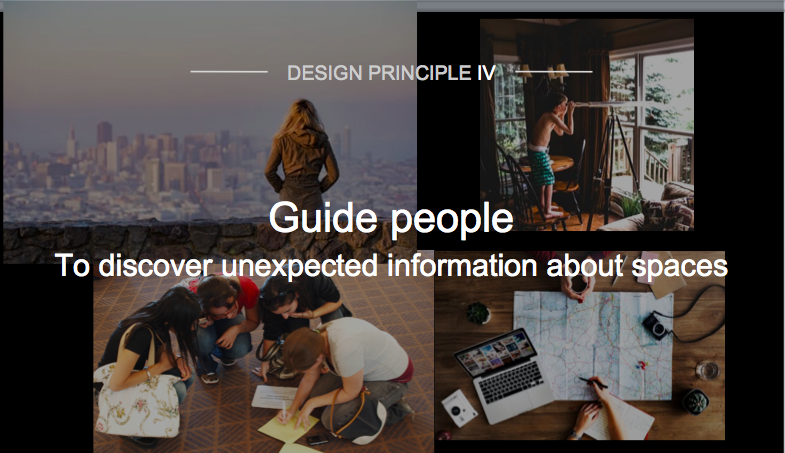
Concept Generation
We used a 5E user journey to structure some of our ideas & created a strategy table to identify the two emerging themes. We also constructed a Chasm diagram to identify our beachhead
Prototyping
We held about 8 prototyping sessions with several of the users we had interviewed. I created preliminary sketches of several ideas and led many of the prototyping discussions.
Presentation
For the final presentation, all four teams contributed to creating a single model of Wabash street with our individual team ideas prototyped on the model.
Course attributes & My Learning
This course was a 15 week 3 credit workshop class taught by Professor Anijo Mathew. It was a great learning experience especially with my team members Siqi Zhang, Wanying Zhu and Yenan Lin. Amongst other things, few influences that left a lasting impact were -
- How to reframe problems such as how Thomas Edison may not just have invented the lightbulb but invented illumination.
- How space is an ordering of understanding and place is an ordering of experience.
- How immersing in conversations with users can inspire creativity.








